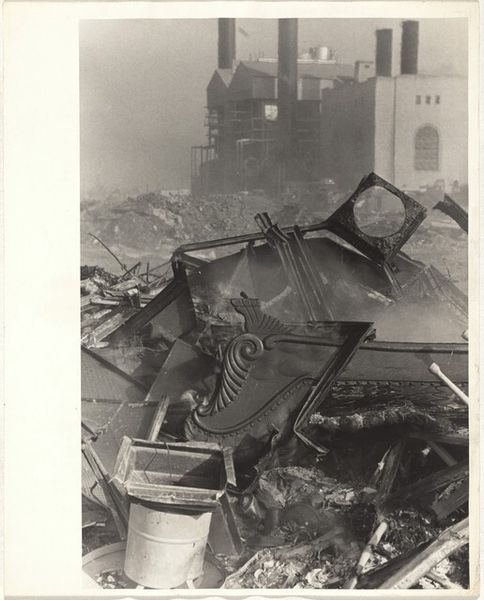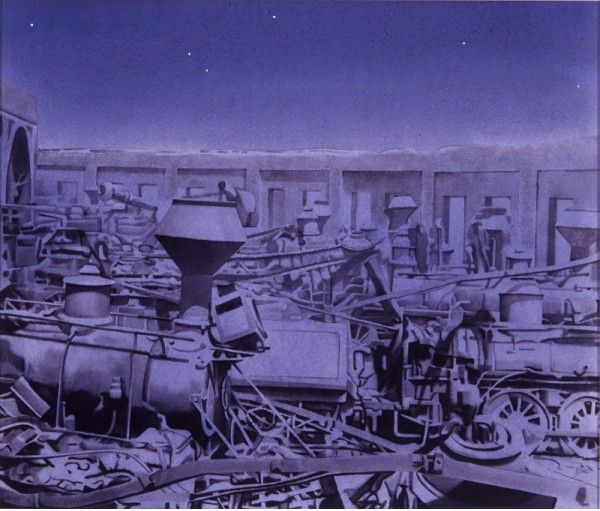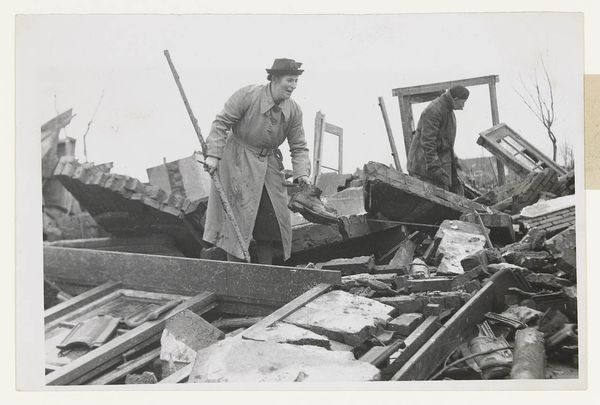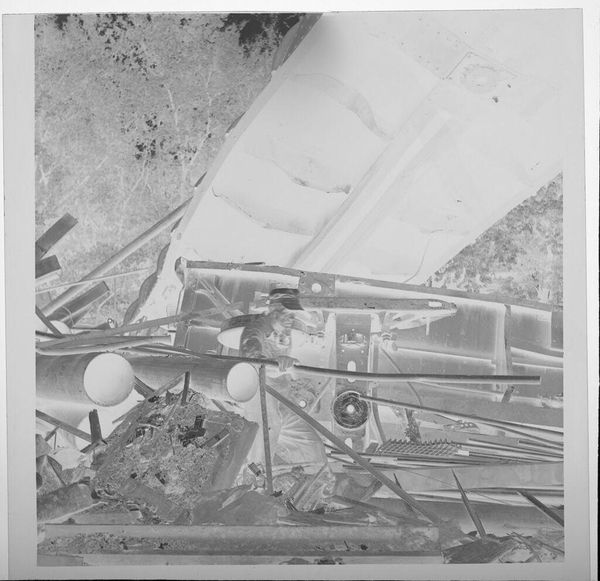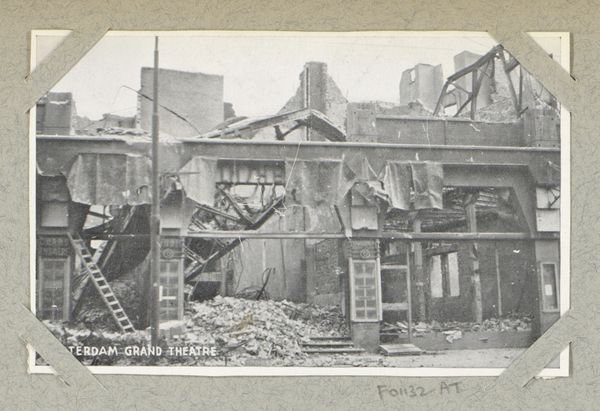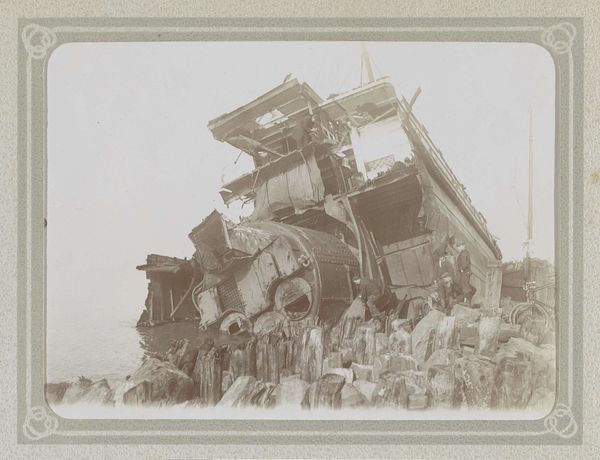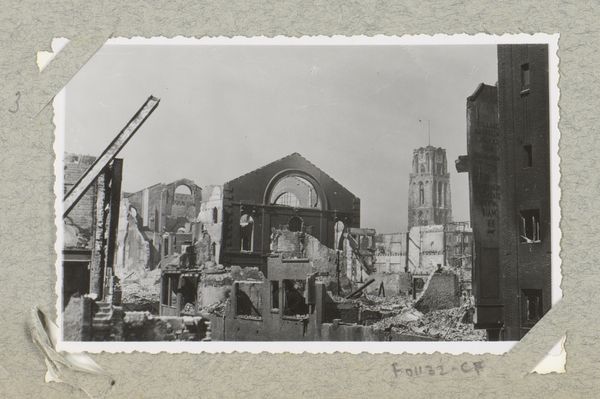
Dimensions: sheet: 20.2 x 25.2 cm (7 15/16 x 9 15/16 in.)
Copyright: National Gallery of Art: CC0 1.0
Editor: This gelatin-silver print, “Dump—San Francisco,” was captured by Robert Frank in 1956. I’m immediately struck by the debris – what looks like discarded furniture – against the backdrop of a rather imposing building. It feels chaotic and maybe even a little bit hopeless. What do you see in this piece? Curator: The image certainly captures a sense of abandonment, but I see something more. Frank was a keen observer of post-war American society. Consider the context: the 1950s were a time of supposed prosperity, but Frank's work often reveals the cracks in that facade. Do you see how the discarded furniture, these objects of domestic comfort, are piled high like societal refuse? Editor: Yes, that’s a great point. It’s like the promise of the American Dream is being questioned. The imposing building in the back almost feels indifferent to the wreckage in the foreground. Curator: Precisely! It prompts us to consider who gets to participate in this so-called "dream" and who is left behind. Frank's images often critiqued social inequalities and challenged dominant narratives around race, class, and the promises of capitalist society. How does the title, simply “Dump,” contribute to that reading? Editor: I guess it strips away any romanticism. It’s blunt, almost accusatory. By naming it that, he’s not just showing us a discarded pile of junk, but making a statement about what society values or doesn’t value. Curator: Exactly. It asks us to confront the wastefulness inherent in a system that prioritizes progress and consumption above all else. We are challenged to reflect on the social costs of progress, revealing the dispossession that exists beneath the surface. Editor: Wow, I hadn't thought about it that deeply. Seeing it as a commentary on social inequalities makes the image so much more powerful. Thanks for sharing your insights! Curator: My pleasure. Hopefully, it inspires further questions about art’s role in shedding light on such important intersectional social issues.
Comments
No comments
Be the first to comment and join the conversation on the ultimate creative platform.
